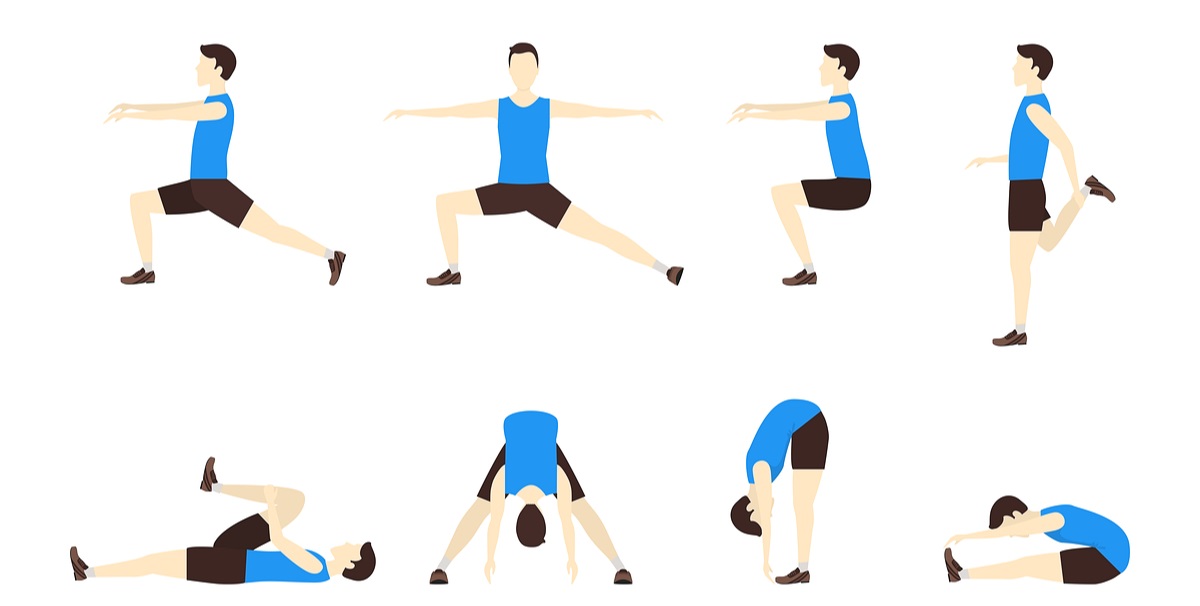The Benefits of Stretching Before and After Exercise

Stretching before and after exercise offers a range of benefits that can enhance performance, reduce the risk of injury, and promote overall flexibility and mobility. Here are the benefits of stretching before and after exercise:
Before Exercise (Pre-Exercise Stretching):
Improves Flexibility: Performing dynamic stretching exercises before exercise helps increase joint flexibility and range of motion, allowing for greater movement efficiency and athletic performance. Dynamic stretches involve controlled, repetitive movements that gently stretch and lengthen muscles without holding a static position.
Enhances Muscle Activation: Dynamic stretching activates the muscles and neuromuscular system, preparing them for the specific movements and demands of the upcoming exercise or activity. Dynamic stretches help stimulate blood flow to the muscles, increase muscle temperature, and optimize muscle function and coordination.
Increases Blood Flow: Dynamic stretching increases blood circulation to the muscles, delivering oxygen and nutrients needed for energy production and performance. Improved blood flow helps reduce muscle stiffness, soreness, and fatigue during exercise, allowing for more effective movement and energy utilization.
Prepares the Body Mentally: Pre-exercise stretching serves as a mental warm-up, helping athletes focus, concentrate, and mentally prepare for the upcoming workout or competition. Dynamic stretches engage the mind-body connection, promoting mindfulness, concentration, and readiness to perform at optimal levels.
Reduces Risk of Injury: Dynamic stretching before exercise helps reduce the risk of injury by preparing the muscles, tendons, and ligaments for physical activity. Dynamic stretches improve tissue elasticity and resilience, reducing the likelihood of strains, sprains, and other musculoskeletal injuries during exercise.
After Exercise (Post-Exercise Stretching):
Promotes Muscle Recovery: Performing static stretching exercises after exercise helps promote muscle recovery and relaxation by releasing tension and tightness accumulated during physical activity. Static stretches involve holding a position for an extended period (typically 15-30 seconds) to lengthen and relax the muscles.
Reduces Muscle Soreness: Post-exercise stretching helps alleviate muscle soreness and stiffness by increasing blood flow to the muscles and promoting the removal of metabolic waste products, such as lactic acid and other byproducts of exercise. Stretching enhances circulation, oxygenation, and nutrient delivery to the muscles, facilitating the recovery process.
Prevents Muscle Tightness and Imbalances: Static stretching after exercise helps prevent muscle tightness and imbalances by restoring optimal muscle length and tension. Prolonged or intense exercise can lead to muscle tightness and postural deviations, which static stretching helps address by elongating tight muscles and maintaining muscle balance.
Improves Flexibility and Range of Motion: Post-exercise stretching contributes to long-term improvements in flexibility and joint mobility by gradually increasing muscle length and reducing muscle tightness over time. Regular stretching helps maintain muscle flexibility and joint range of motion, preventing stiffness and enhancing movement quality.
Enhances Relaxation and Stress Relief: Post-exercise stretching promotes relaxation and stress relief by inducing a state of physical and mental relaxation. Static stretches activate the parasympathetic nervous system, triggering the body's relaxation response and reducing stress hormone levels, such as cortisol.
Facilitates Cool Down: Stretching serves as an integral part of the cool-down phase of exercise, helping gradually lower heart rate, respiration rate, and body temperature after intense physical activity. Post-exercise stretching promotes a smooth transition from exercise to rest, aiding in recovery and preventing abrupt changes in blood flow and circulation.
In summary, incorporating stretching exercises before and after exercise offers numerous benefits, including improved flexibility, muscle activation, blood flow, mental readiness, injury prevention, muscle recovery, relaxation, and stress relief. Dynamic stretching before exercise prepares the body for physical activity, while static stretching after exercise promotes muscle recovery, flexibility, and relaxation. Incorporating a combination of dynamic and static stretches into your pre- and post-exercise routine can help optimize performance, reduce the risk of injury, and promote overall musculoskeletal health and well-being.
Thank you,